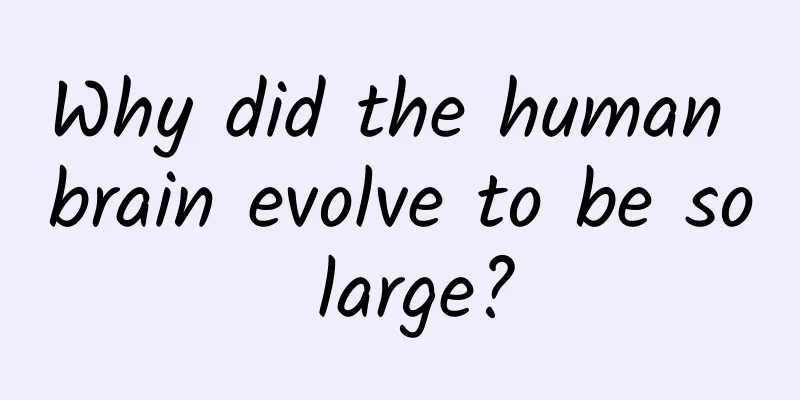Why did the human brain evolve to be so large?

|
So far, evolutionary anthropologists have offered three main explanations for why the human brain evolved to be so large (each of which has more detailed subtheories): Environmental explanation: Survival challenges—such as finding food, hunting animals, or remembering food sources—tend to select for large brains. Social explanation: The selection pressures of interacting with others (whether cooperatively or competitively) favor those with brains that are sufficiently developed to anticipate the actions of others. Cultural explanation: Those who can accumulate knowledge in long-term memory and pass it on to others have a greater chance of reproducing. Cooking may be one of the cultural factors. Biological anthropologist Richard Wrangham proposed in his 2009 book Catching Fire that once we learn to cook food, we can obtain calories that are easier to digest and absorb, thus having extra energy and time for brain development.) All three factors probably play a role, and they influence each other. But the mix of these factors has to be just right to create the human brain as we know it. For example, if natural selection favored high cooperation, the result would be a small human brain. Think of it this way: if you are highly dependent on others, you don't need to use your brain very much. Ants, which are amazingly cooperative, have a very small brain. Bees are similar. In addition, there are gains and losses. A developed brain involves a major disadvantage: it requires a lot of fuel. Today, 20% of the energy generated by the body's metabolic activities is supplied to the brain. If the selection pressure is slightly different, the human brain may take another evolutionary path: use this energy for reproduction (or advance the age of sexual maturity) or develop a stronger physique. But we did not evolve any of these, and only evolved a super energy-consuming brain. So how do we know which factor is the most important in this process? Freireau's paper: Environmental factors may outweigh social factors Usually, people explore the question of "why the human brain is so big" from the perspective of correlation research. Anthropologists and biologists study the brains of different species and try to infer the following question: what behavioral changes become possible after the animal's brain becomes larger? For example, in many primates, social learning is correlated with larger brain capacity. This method of research is a bit messy, and it is difficult to draw firm conclusions. (Also, human evolution cannot be verified experimentally. You can't exile a group of people to an isolated island with different environmental pressures and observe how they evolve.) So, Frérot and his co-authors turned to math. They built a computer model that simulated different hypothetical scenarios for human evolution: one in which all the selection pressures came from the natural environment, and one in which all the selection pressures came from social life. (They did not model cultural scenarios, but hope to do so in future research.) The model considered the metabolic benefits and costs of an ever-larger brain relative to the rest of the body. Then they ran the program to try to answer a question: How do these factors fit together to form the human brain we have today? The model shows that the natural environment best explains the size of the human brain. The challenges of the natural environment, and the challenges of living in groups with relatively mild impacts, led to the rapid expansion of human brain capacity. Perhaps a large part of human evolution took place in the savannah of Africa, where food and water are more difficult to obtain than in the forest. Humans also had to use their brains to avoid the heat. But questions remain. "If we find that difficult natural environments led to the evolution of larger and larger brains in humans, this raises the question: why is this only true for humans? Why not for other species?" says Frérot. Many species survive in harsh natural environments (some have even adapted to dark caves), but have never evolved to the point of ordering a pizza using a smartphone (which would be the absolute pinnacle of human intelligence and evolution). Perhaps this is where culture—the ability to learn and pass on knowledge—comes in. In difficult environments, accumulating knowledge about the environment makes survival much easier. This is not to say that social factors don't play a role. After all, humans are highly social, gregarious animals. This may also be a result of evolution. At the very least, it is difficult to imagine how you can share cultural knowledge without fostering social cooperation. |
<<: They are called the "all-round king" of nutrition! Eat more of these 6 vegetables in spring!
>>: Be careful! Ubiquitous lasers may ruin your eyes
Recommend
Condensed matter physicists rewrite "The Theory of Horse" and realize the magical super-molar material
In the field of condensed matter physics, the res...
Will the number of cancer patients increase significantly? It is recommended to do these 5 things to actively increase your "anti-cancer ability"!
“In general, the incidence of cancer in my countr...
Will surgery under general anesthesia make people stupid? Is it true that there are many side effects?
Before the advent of anesthesia, surgeons had to ...
One by one, we spend money to invite more than 40 types of cancer into our lives...
What do we gain from smoking? My mouth was full o...
Analysis of information flow promotion copywriting, teach you how to lock in users in one second!
According to iResearch's report "Market ...
French students design radiation-proof underwear to prevent smartphones from killing sperm
Mobile phones emit radio waves, and whether the u...
How to create a successful event promotion?
Every time a large-scale event is held, many oper...
8 ways to promote on Xiaohongshu, shared with you!
I spent 2 months testing, during which I found tw...
These Winter Olympics events are most prone to injuries! How to prevent them?
As the opening of the Beijing Winter Olympics dra...
What should I do if the information flow delivery effect is not good? Just need to understand these 4 data!
How to play information flow advertising ? Who sh...
Reusable community operation + live broadcast process!
Due to the impact of the epidemic in 2020, many c...
Microsoft releases an Android app called "Microsoft Apps"
Although the title is a bit confusing, Microsoft ...
Action sci-fi movie "Ready Player One" HD 1080P with Chinese and English subtitles
The story takes place in 2045, and virtual realit...
Start with copywriting to quickly improve SMS conversion and experience
This article analyzes a variety of practical scen...
miāo miáo miǎo miào…Does your cat speak dialect?
Audit expert: Wu Lei National licensed veterinari...









